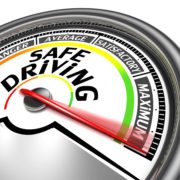Careful Driving At Night

If you’re a fan of road trips, or driving at night in general, you understand the extra safety required to navigate dark roads. You might think you drive just as well at night, but consider this: Even though nighttime driving accounts for just 23% of vehicle miles traveled, more than 50% of fatalities for vehicle occupants 16 and older occur between 6 p.m. and 6 a.m., according to the National Safety Commission (NSC).
Because we’re big advocates for safety at Synergy Insurance, we thought it would be helpful to take a look at why night driving is more dangerous, and what you can do to decrease that danger.
What’s dangerous about night driving?
- Decreased vision. We won’t go into all the biological details, but different parts of the eye (such as iris, pupil and retina) work differently at night. Your peripheral vision is actually slightly improved, but it’s more difficult to focus on objects ahead of you. And traveling between well-lit areas and darker roads creates issues as well.
- Driving too fast for your headlights. Depending on vehicle speed and headlight setting, many people “over-drive” their headlights. That means, by the time they see something on the road, it’s too late to stop in time to avoid it.
- Impaired judgment. Whether due to drowsiness or the use of alcohol or drugs, it appears that drivers at night often don’t use good judgment. According to the NSC, 66% of fatalities at night involve vehicle occupants who weren’t wearing seat belts.
So what do you do?
Sometimes, there’s no way around driving at night. So, whether you’re just running to the store or driving a long distance, here are some tips to help you make a safe trip.
- Make sure your vehicle’s lights are in good working condition. And not just headlights, but turn signals, taillights, etc.
- Avoid speeding. Leave a bigger cushion between you and other cars than you would during daylight hours. Leave yourself more time for the trip.
- Be more aware of your surroundings. You shouldn’t be using your phone, messing around with the radio or trying to find something on the floor while you’re on the road anyway – and distractions are even more deadly at night.

Safety behind the wheel is crucial. In case of emergency, always have the right documents on hand. Our Auto Accident Workbook has all the important information needed to file a claim, so you can take the guesswork out of your coverage. Click the image to get your copy today, and keep it on file in your vehicle!











